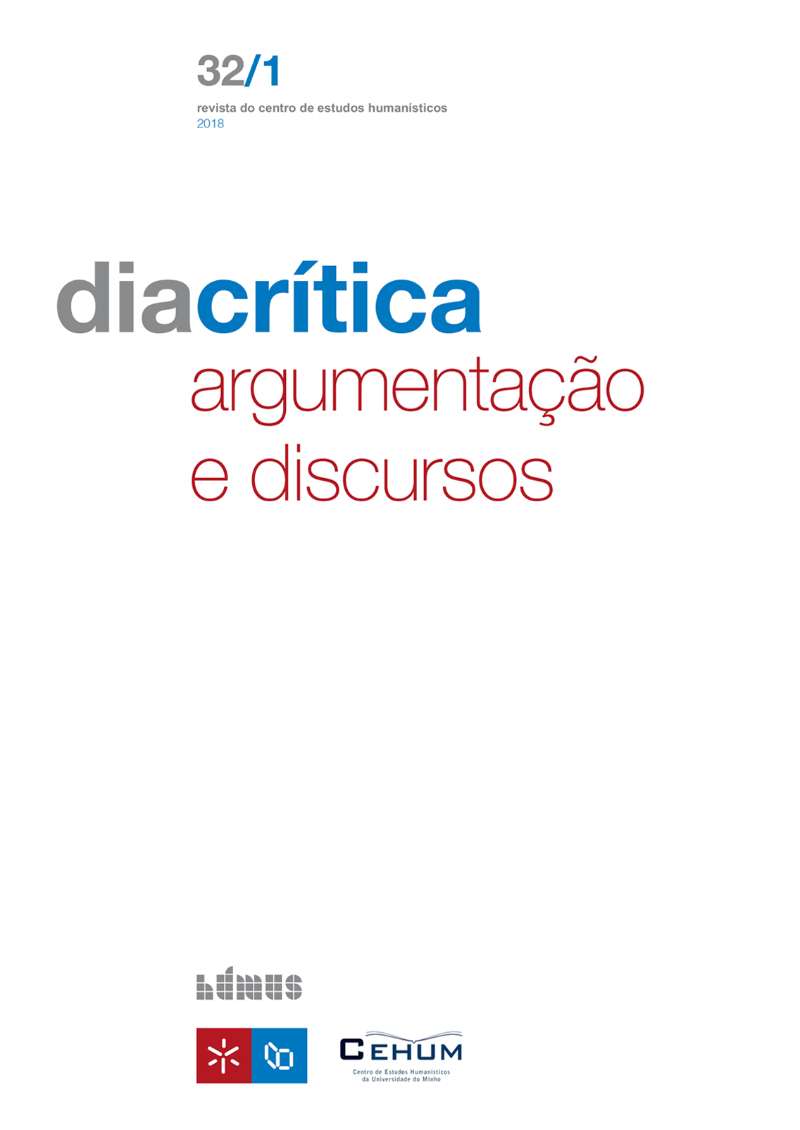Romance convergences and divergences. From Latin Do "habēre" and "tenēre" to contemporary forms in PE, PB, Italian and Neapolitan
DOI:
https://doi.org/10.21814/diacritica.5028Keywords:
linguistic change, Romance languages, lexical-semantic relationsAbstract
In addressing the linguistic divergences and convergences in Romania, the German Romanist Harri Meier (1948) argued that the divergent developments of Latin in Romania would derive from the dialectal division of that language already in the Italian peninsula. As regards the linguistic relations between the Italic and Iberian peninsulas, the author suggests that the substitution of the continuers of the Latin verb habēre, in a greater or lesser part of their functions, by the verb tenēre in Portuguese and Spanish would have an analogy in dialects of southern Italy, especially those grouped under the label of Neapolitan. Based on this hypothesis, the uses of the verbs habēre and tenēre in classical Latin and their continuers in the contemporary varieties of Portuguese (European and Brazilian), standard Italian and Neapolitan were investigated in a comparative way. This research aimed to identify possible semantic motivations for the convergences and divergences between Latin and the neolatine varieties cited in relation to the use of the verbs in question. The research was carried out based on written, dated, literary, prose and narrative texts.
References
Ammaniti, N. (2006). Come Dio comanda. Milano: Arnoldo Mondadori.
Beccaria, G. L. (1968). Spagnolo e spagnoli in Italia: riflessi ispanici sulla lingua italiana del Cinque e del Seicento. Torino: Giappichelli.
Bracale, R. (2010). La nascita del dialetto/idioma napoletano. Brigantino: il portale del Sud. Napoli e Palermo. Consultado em Novembro 8, 2017, em
http://www.ilporta-ledelsud.org/napoletano.htm.
Caesar, C. J. (1914). De bello Gallico. Oxford: Thomas Rice Holmes (Org.), Clarendon Press. (Scriptorum Classicorum Bibliotheca Oxoniensis). Consultado em Setembro 21, 2017, em http://data.perseus.org/texts/urn:cts:latinLit:phi0448.phi001.perseus-lat1.
Callou, D. & Avelar, J. (2012). Preservação e mudança na história do português: de possessivo a existencial. Matraga, 30, 224-234.
Cardoso, S. A. et al. (2014). Atlas linguístico do Brasil. 2v. Londrina: Eduel.
Carvalho, B. (2006). Nove noites. São Paulo: Companhia das Letras.
Croce, B. (1895). La lingua spagnuola in Italia. Roma: Loescher.
De Mauro, T. (2000). Dizionario italiano De Mauro [computer software]. Torino: Paravia.
Faria, E. (2003). Dicionário latino-português. Belo Horizonte: Livraria Garnier.
Giacco, G. (2003). Schedario napoletano. Proprietà letteraria dell’autore. Consultado em Novembro 8, 2017, em http://www.vesuvioweb.com/it/wp-content/uploads/Giuseppe-Giacco-Vocabolario-napoletano-vesuvioweb.pdf.
Hopper, P. & Traugott, E. (1993). Grammaticalization. Cambridge: Cambridge University Press.
Matteo. (1861). Il Vangelo Di San Matteo, volgarizzato in dialetto napoletano, da un letterato della città di Napoli. Londra: Strangeways & Walden. Consultado em Novembro 1, 2017, Em https://play.google.com/store/books/details?id=OEgRYjDC3doC&rdid=book-OEgRYjDC3doC&rdot=1.
Mattos e Silva, R. V. (1992). Caminhos de mudanças sintático-semânticas no português arcaico. Revista de Estudos da Linguagem, 1(1), 85-99. DOI: https://doi.org/10.17851/2237-2083.1.1.85-99
Mattos e Silva, R. V. (1994). Para uma caracterização do período arcaico do português. Delta, 10, n. Especial, 247-276.
Meier, H. (1974). A formação da língua portuguesa. In H. Meier (Org.), Ensaios de filologia românica I (3ªed.) (pp. 5-34). Rio de Janeiro: Grifo. Publicação original dos ensaios: Revista de Portugal (Série A: Língua Portuguesa), 1947-1948.
Posner, R. (1996). The Romance Languages. Cambridge: Cambridge Universty Press.
Rohlfs, G. (1969). Grammatica Storica della Lingua Italiana e dei suoi dialetti: Sintassi e formazione dele parole. Torino: Giulio Einaudi editore. Título original: Historische Grammatik der Italienischen Sprache und ihrer Mundarten. III. Syntax und Wortbildung [1954].
Saramago, J. (2005). As intermitências da morte.São Paulo: Companhia Das Letras.
Tagliavini, C. (1993). Origenes de las lenguas neolatinas. (1ª ed., 2ª. reimpr). Madrid: Fondo de Cultura Económico. Título original: Le origini delle lingue neolatine [1949].
Teixeira, J. (2011). Quando um verbo é antónimo de si mesmo: cognição e estrutura lexical de levantar. Matraga, 28, 102-128.
Vilaça, C. E. L. (2009). Gramaticalização de ‘ter’, no português, e ‘avere’, no italiano: um estudo comparativo. In D. da Hora (Org.), Anais do VI Congresso Internacional da ABRALIN (pp. 944-953). João Pessoa: Idéia.
Downloads
Published
How to Cite
Issue
Section
License
Copyright (c) 2023 Cynthia Vilaça

This work is licensed under a Creative Commons Attribution-NonCommercial 4.0 International License.










